The Versatile Pudelpointer
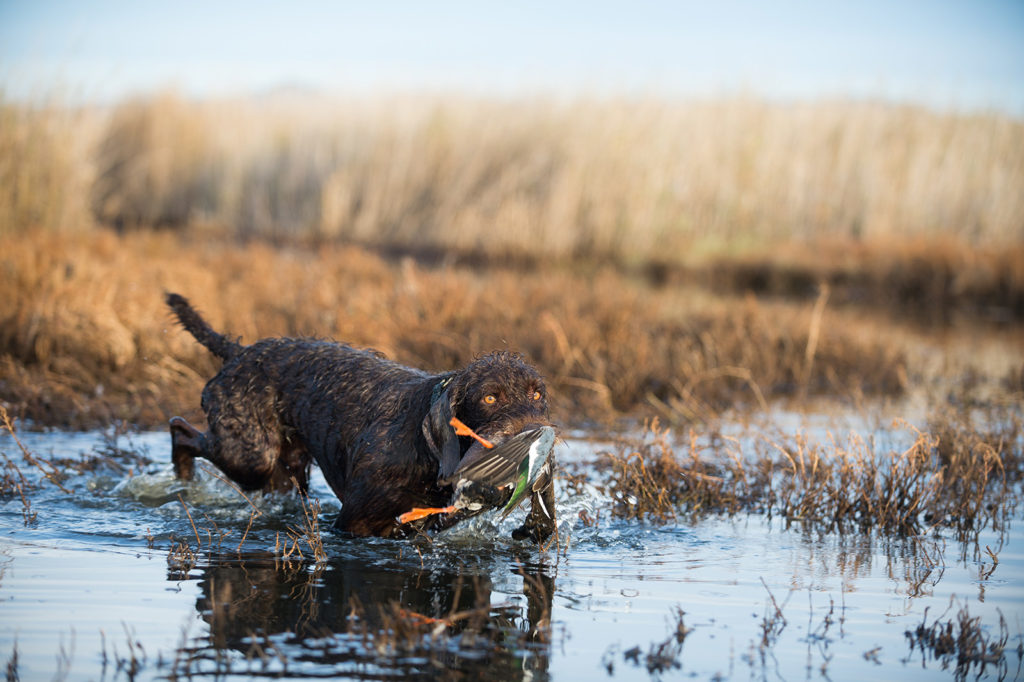
My six-year-old daughter looked up at Yosemite Falls with an expression of delight and wonder. Her blue eyes were wide, her long blonde hair blew gently in the evening breeze, and across her face stretched one of the most memorable smiles I’ve seen in my lifetime. She was pleased, no doubt, to be outdoors in one of America’s most spectacular valleys in our nation’s third-oldest national park, but the expression wasn’t for the scenery. This was the last stop on our way to pick up the puppy that she had always wanted.
The following morning would be our first encounter with Mark Westerlund of Dreamwork Gun Dogs in Bridgeport, California, near the Nevada state line. Bridgeport is in the rough, tough, and rugged country of the Eastern Slope of the Sierra Nevada. Mark breeds only one type of dog, and the interview process with prospective dog owners who aspire to own one of Mark’s dogs can be daunting. He doesn’t only want to know if you are a hunter—he wants to know how many days a year you intend to hunt over your dog and how many different species of birds, both upland and waterfowl, you pursue. These aren’t dogs for the casual weekend pheasant hunter or even a regular in the duck blind. A Labrador would be just fine for that sort of work. Mark’s lines are known for hunting Canada geese over mostly frozen lakes at dawn and then chasing sage grouse, mountain quail, chukar, and sooty grouse right up to the top of 10,000-foot snow-capped peaks in the Sierra until sunset—on the same day. That sounded like my kind of dog.
For more than 25 years, Mark has bred one of the rarest hunting dogs in America, a breed that even most avid bird hunters have never seen work in the field: the pudelpointer. As its German name suggests, the breed had its origins in the kennels of 19th Century Germany. The first cross at the foundation of the lineage in 1881 was between a German Hunting Pudel named Molly, owned by the famous dog breeder Hegewald, and Tell, an English pointer belonging to Kaiser Frederick III. The head breeder on the project, Baron von Zedlitz, was trying to combine the characteristics of the finest retrieving dog on the Continent, the ancestor of today’s standard poodle, with the best pointing dog in Europe at the time—the English pointer.
Over the course of 30 years, and a breeding program that involved 11 pudels and 80 pointers, the pudelpointer emerged. Its unique wirehaired, chocolate-brown appearance holds more resemblance to a Wookie than to today’s fluffy show poodle or to the shorthaired, mostly white English pointer. In fact, they look far more similar to the much more common German wirehaired pointer or Drahthaar, a later versatile breed that was developed, in part, by crossing pudelpointer bloodlines with German shorthaired pointers. But there are two big differences—pudelpointers don’t shed, and they are known to be much calmer around children indoors than most other versatile breeds, displaying what some owners call their off switch. It was these two traits that convinced my wife to allow us to get one.
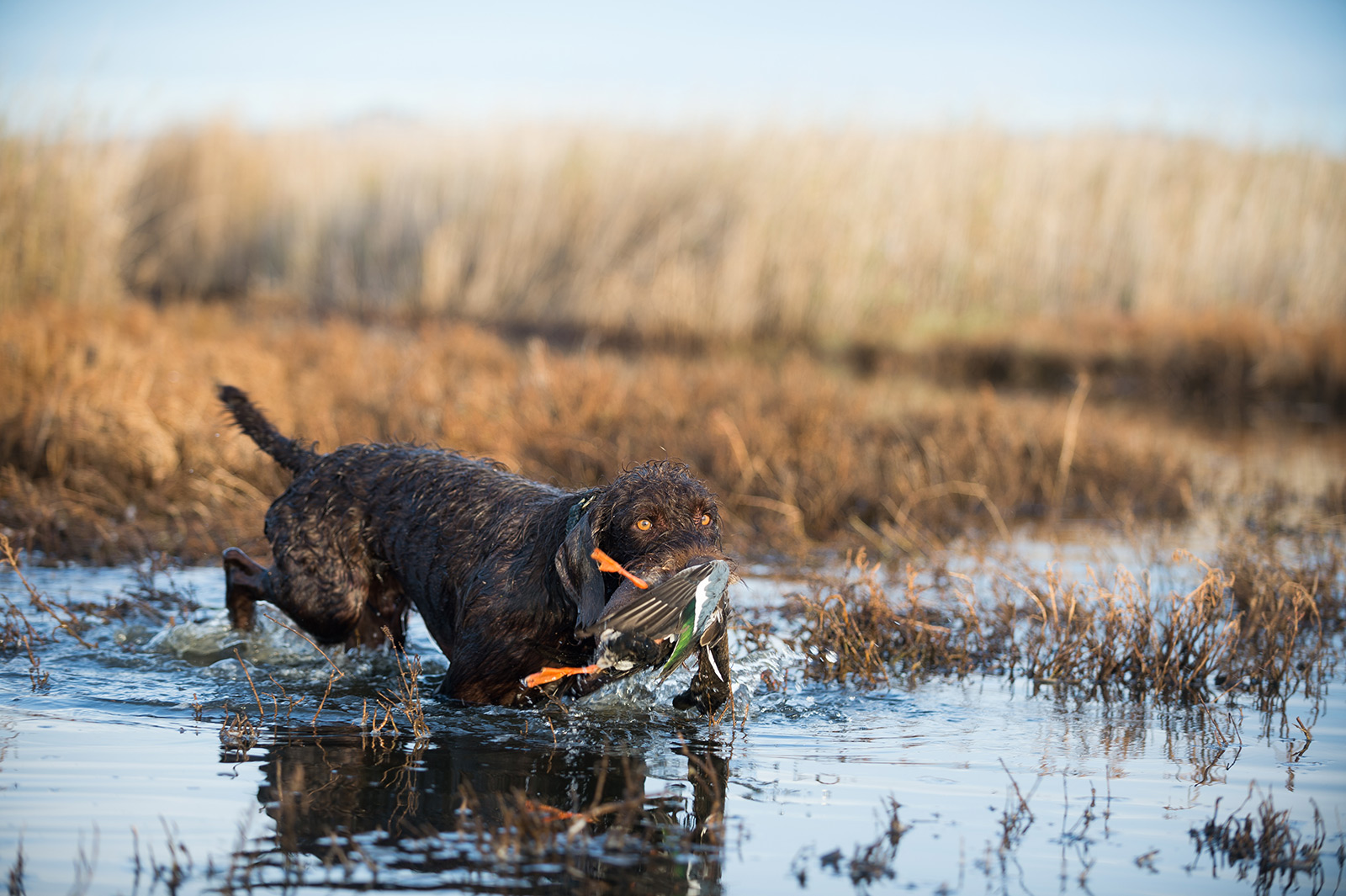
The pudelpointer breed was introduced to North America in 1956 by Bodo Winterhelt, an immigrant from Germany who was an avid wingshooter and dog trainer. Over the intervening 60 years, pudelpointers in America have quietly established themselves among the finest gun dogs in our vast, varied, and often rugged terrain. Though infrequently encountered, they are most often seen hunting the rugged high country of Idaho, Oregon, and California. Nearly all the pudelpointer breeders in North America are affiliated with either versatile hunting dog or breed-specific testing organizations. The pudelpointer is one of very few gun dog breeds today that is still exclusively owned by hunting families, since there are no show or pet lines, and any recognition of the breed by the American Kennel Club, which could lead to nonhunting lines, has been carefully avoided by owners and breeders alike.
My daughter knew nothing of the breed’s origins, but she very quickly scooped up a tiny chocolate-brown puppy that had caught her eye as a little more curious and a little friendlier than his littermates. All my thorough preparation for making my studied pick of the litter was wasted in an instant. My six-year-old girl instinctively knew exactly which dog was hers!
After the registry paperwork and a check changed hands and I thanked Mark for the opportunity to raise one of these rare dogs, we loaded our new pup into his crate, and Dreamwork’s Yosemite was ready for a seven-hour journey over the Sonora Pass, across the Central Valley, and on to his new home in the San Francisco Bay area.
When we arrived home, there was no need to come up with a call name for our new puppy. My two little girls had already decided a month before that he’d be called “Tacktor” since they wanted a name that included the first initial of each of our family members (T, A,C, and K), but they also wanted their new hunting dog to be “tough as a tractor.”
I hadn’t really considered the challenges or the benefits of a dog that was as tough as a tractor, but the girls certainly got what they wanted. The sheer toughness at first presented itself in some frustrating ways—like his ability to chew through anything but metal and PVC in a matter of minutes, which he has thankfully outgrown. But it later turned out to be much more useful. Even at just five months of age, he thought nothing of hunting all morning at a full run right over cactus-covered high desert mountains. There was no wincing, no yelping, just a happy lick when I pulled out the occasional spine with my pliers.
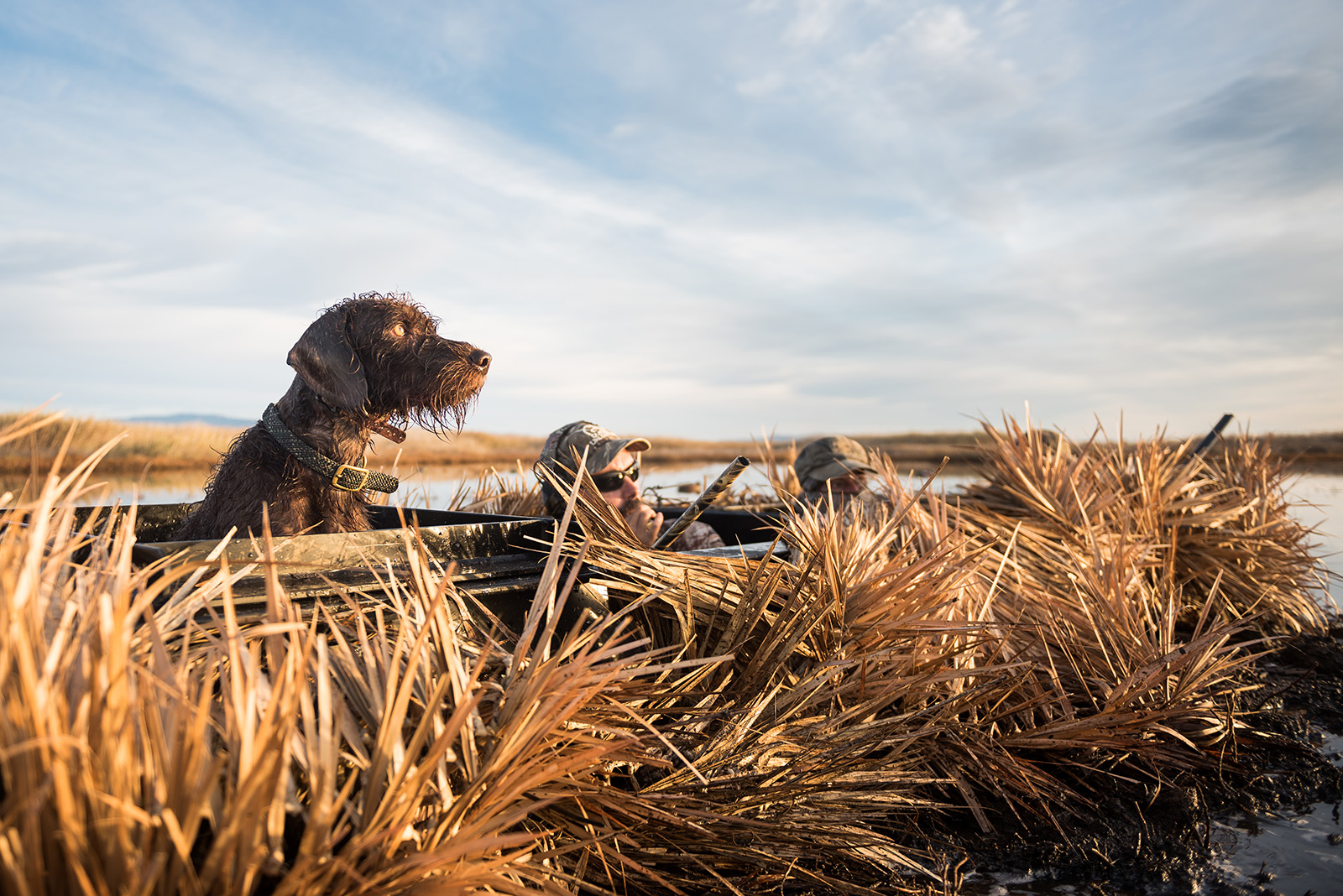
Unfortunately, my pliers were nowhere to be found when Tacktor encountered his first porcupine at an elevation of 10,000 feet on Jupiter Ridge in Utah’s Wasatch Mountains while hunting dusky grouse. There was no overt sign of anything problematic—no yelp, no sudden recoil—just a mildly confused expression on the dog’s face as he looked back at me, bleeding profusely from the two dozen quills that had punctured his nose, lips, and tongue. Given that we were a 30-minute hike from the truck and then it would be an hour’s drive down the canyon to the nearest veterinarian, I wasn’t left with many options. My little girl, now sobbing at seeing her beloved dog injured and bleeding, came over to pet him and keep him still and calm while I pulled 24 quills—each with one swift, hard yank—out of his face one by one. He sat still and stoic—clearly pleased with the extra attention from his little girl—through the entire procedure.
Like most pudelpointers, Tacktor tore through his training with keen intelligence, the ability to handle the stress of a rigorous training schedule, and an enormous enthusiasm for birds of all descriptions. My older daughter and I did all the core obedience work over his first summer, carefully following Mike Stewart’s sage advice from The Wildrose Way, while my younger daughter—who was two at the time—was “chief socialization officer,” charged with hugging the puppy enthusiastically, and often tackling him in the process, to ensure that he was used to being handled in the often indelicate style of young children. He’s now sweeter with children than any hunting dog I have seen, and many of the other kids at school run over to pet him at drop-off each morning.
As versatile hunting dogs, pudelpointers are expected to learn not just pointing and retrieving in the field, but also the steady patience and swimming abilities required of waterfowl retrievers. I left the upland fieldwork to the experts, in our case Mike Sutsos of Wing & Barrel Ranch in Sonoma, California, who had Tacktor locked on point, steady to shot, and retrieving to hand in just a few weeks of training, even though he entered the program at just four months old. Mike, who has trained thousands of dogs—including many field trial national champions—and wrote one of the best books I have read on training pointing dogs, simply said to me, “That’s a lot of dog.”
He continued, “Tacktor is one of the smartest and toughest pups I’ve worked with—but that’s not necessarily a good thing. You’re going to have to hunt him hard and often and come up the curve as a handler fast.”
I spent the rest of the summer introducing Tacktor to water, building his confidence as a swimmer, and making sure he could retrieve reliably at any distance he could swim, while I waited for his first hunting season to open.

There was little doubt that the dog had plenty of natural ability, and with basic training behind him it would be a question of how fast I could come up the curve as a handler to continue his development. In his first hunting season from just over five months to a year old, I hunted him hard, as instructed. We hunted doves, quail, snipe, and waterfowl in California; chukar, gray partridge, dusky grouse, and sage grouse in Utah; and sharp-tailed grouse, prairie chickens, and wild pheasants in South Dakota. All season long, he got better on every hunt, and I slowly improved as his handler and companion, too.
By the age of one year, Tacktor had been exposed to nearly every habitat our continent has to offer from the salt marsh to the desert, from the prairie to the mountains, and everything in between. To be honest, I was skeptical about whether a pudelpointer could really swim with the Labs and retrieve diving ducks from deep, fast-moving tidal seawater; hunt quail in the hot desert as well as the big-running, short-haired pointing breeds; and keep his footing in chukar country like a mountain goat. I’m not skeptical anymore.
That bit about the mountain goat probably saved my life one day last season in the barren and miserably steep mountains of San Benito County in Central California. Only a fool or a chukar hunter would ever climb into that desert range in the first place, since it’s known mainly for the abandoned mercury mine at New Idria and the high asbestos content of the natural rock. Chasing California quail and chukar in a drought year, I had managed to get turned around in an unfamiliar part of the range, and as I attempted to short-cut my way back in the direction where I thought my Jeep was, I not only got lost, but I ended up on a rocky knob that I saw no possible way to get down from. Having accidentally slid onto its top, I wasn’t very confident that I could even climb back up the way I’d come. Alone, tired, and a little shaken by my predicament, I hardly realized that Tacktor was surveying every possible route down off that rocky knob. After about 10 minutes of exploration that I wouldn’t have dared to attempt with just two legs, he eagerly led me down a winding, narrow goat path to safety—and after another hour’s walk, to our Jeep.
A few seasons in, I no longer have any questions. Tacktor hunts, points, and retrieves upland gamebirds at least as well as the various field trial champions I have been privileged to hunt over. Admittedly, he looks less stylish doing it than a beautiful white pointer with a high head and tail, but he’s arguably better at it with his head low and his tail straight back, wagging at a frequency indicative of the bird’s distance from his nose. I have seen him make retrieves on tiny cinnamon teal so deep in the tules that most top waterfowl retrievers wouldn’t have even attempted it. He’s hunted all day for chukar in freezing rain and snow 2 feet deep and broken ice to retrieve ducks. He has run 20 miles a day hunting grouse and pheasant on the open prairies of South Dakota for 2 straight days only to go 30 miles on the third day, since he had to cover for the 2 local Labs that were back in the truck, exhausted.
The only downside to all this is that the 2-mile walk to school each morning with the girls is barely enough for a pudelpointer’s baseline exercise. With his drive and energy, Tacktor needs to do those 2 miles, preferably at a jog with my wife, followed by a chance to run hard at his own (much faster) pace in an open field every afternoon and a proper 5- to 10-mile hike, run, or hunt at least weekly all year long.
I think most serious bird hunters and dog lovers hope, someday, to encounter a dog that so matches their own style in the field and is so compatible with their family at home that they can say with certainty that they have found their breed. With my first pudelpointer, I have found mine.
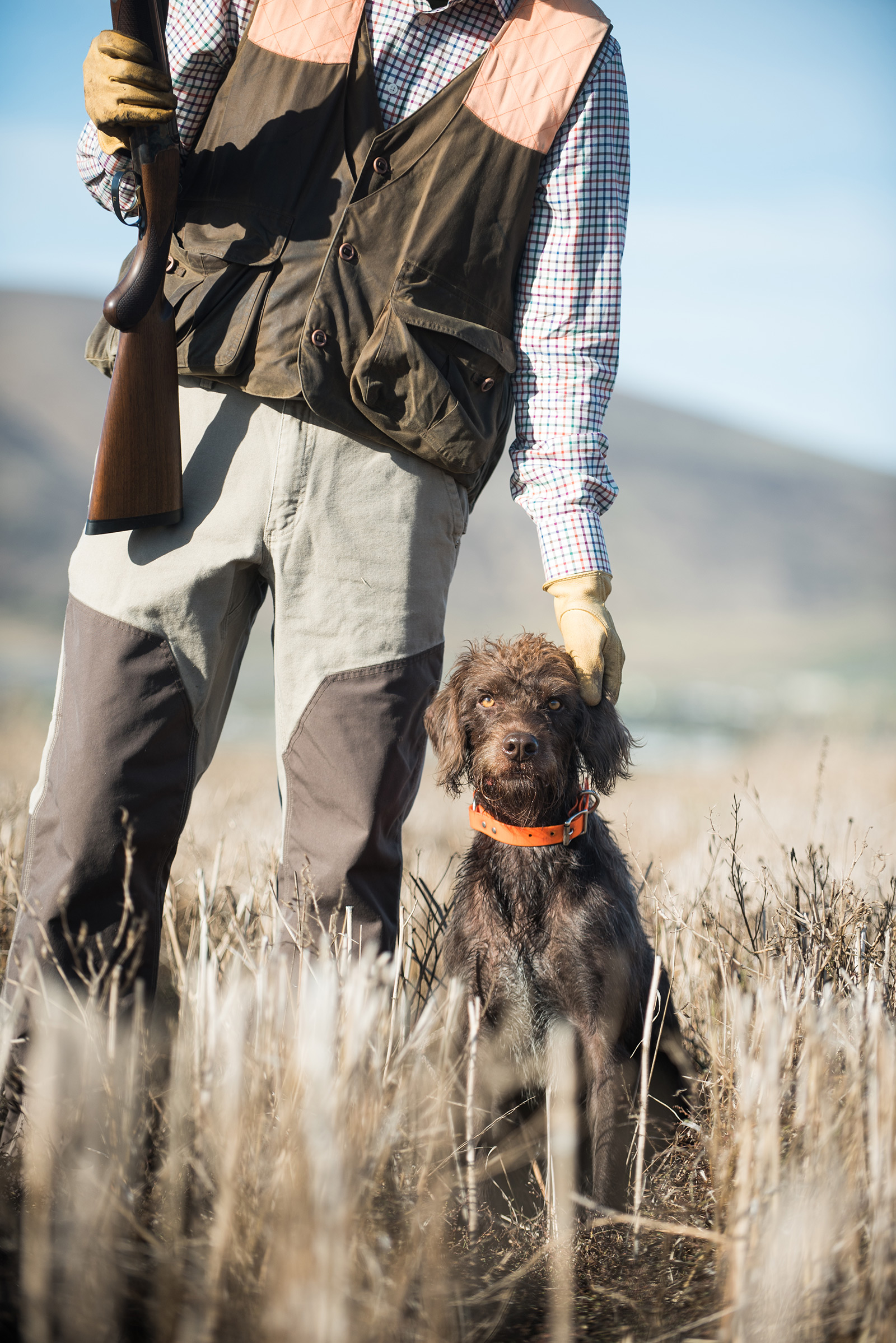
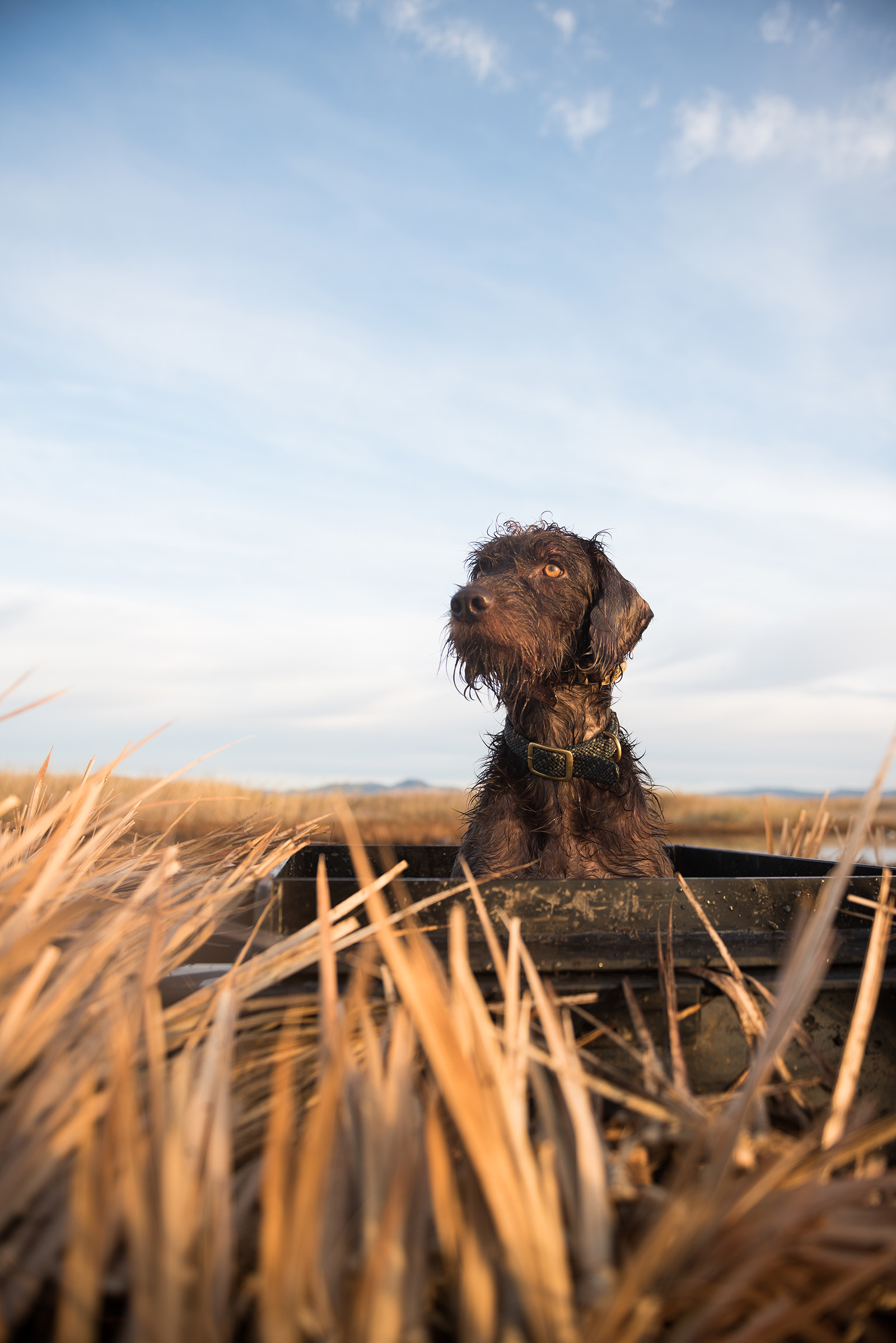
Originally published in Volume 5, Number 3 (April-May 2017) of Covey Rise.
























